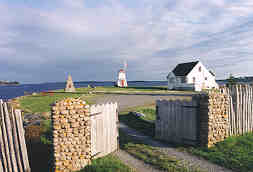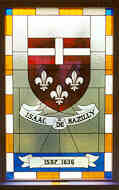

Capital of New France
1632-1636
The Town of LaHave was named in 1604 by the French explorers and colonists, DeMonts and Champlain; it was their first anchorage in the New World.
The fort and adjoining settlement were established in 1632 by Isaac de Razilly, cousin of Cardinal Richilieu. Razilly's colony was centered on the fortress of Sainte Marie-de-Grace where, in addition to the fortifications, there were living accommodations for Razilly himself and his followers, and a chapel for the Capuchin fathers.
A settlement was also established at Petite Riviere, some 12 miles west of LaHave during this period, where some forty settlers were engaged in farming their newly-cleared land.
LaHave served as the capital of New France until shortly after de Razilly's death in 1636, when the fort was abandoned. LaHave was resettled in the 1760's.
From the settlers who were brought to Acadia, a race developed which not only became, of necessity, selfsufficient, but has also survived wars, deportation, and, at least to some extent, the threat of assimilation, for three hundred and fifty years.
Isaac de Razilly 1587-1636
This stain glass window stands as a permanent exhibit in the Fort Point Museum, LaHave, Lunenberg County, Nova Scotia
Isaac de RAZILLY received a commission from Louis X111 in the spring of 1632 to bring French settlers to Acadia, and arrived with three ships in September of that year, establishing Fort Sainte de Grace with dwellings and a chapel on what is now Fort Point. The settlement flourished until Isaac"s death in 1636, with farms at Petite Riviere and trade in fish, furs and timber. Between 1636 and 1640 the colonists were transferred to Port Royal where they became the nucleus of the settlement from which most Acadians trace their ancestry.
Please click here to open my seventh page